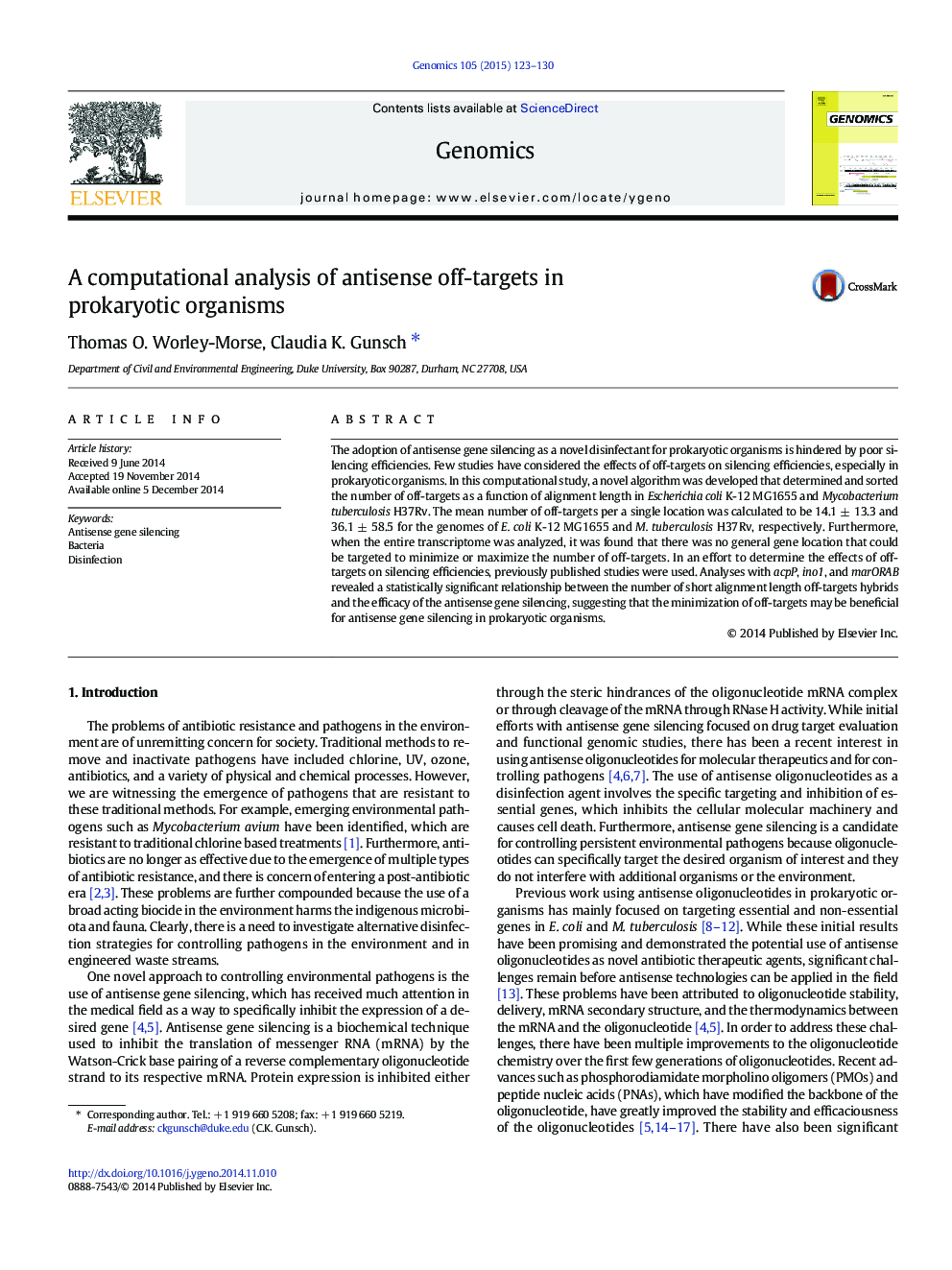| کد مقاله | کد نشریه | سال انتشار | مقاله انگلیسی | نسخه تمام متن |
|---|---|---|---|---|
| 2820643 | 1160875 | 2015 | 8 صفحه PDF | دانلود رایگان |
• This algorithm determines and sorts antisense off-targets in prokaryotes.
• The mean number of off-targets per a location ranged between 14–36.
• Short alignment length off-target hybrids may affect antisense gene silencing.
• Minimization of off-targets may be beneficial for antisense gene silencing.
The adoption of antisense gene silencing as a novel disinfectant for prokaryotic organisms is hindered by poor silencing efficiencies. Few studies have considered the effects of off-targets on silencing efficiencies, especially in prokaryotic organisms. In this computational study, a novel algorithm was developed that determined and sorted the number of off-targets as a function of alignment length in Escherichia coli K-12 MG1655 and Mycobacterium tuberculosis H37Rv. The mean number of off-targets per a single location was calculated to be 14.1 ± 13.3 and 36.1 ± 58.5 for the genomes of E. coli K-12 MG1655 and M. tuberculosis H37Rv, respectively. Furthermore, when the entire transcriptome was analyzed, it was found that there was no general gene location that could be targeted to minimize or maximize the number of off-targets. In an effort to determine the effects of off-targets on silencing efficiencies, previously published studies were used. Analyses with acpP, ino1, and marORAB revealed a statistically significant relationship between the number of short alignment length off-targets hybrids and the efficacy of the antisense gene silencing, suggesting that the minimization of off-targets may be beneficial for antisense gene silencing in prokaryotic organisms.
Journal: Genomics - Volume 105, Issue 2, February 2015, Pages 123–130
